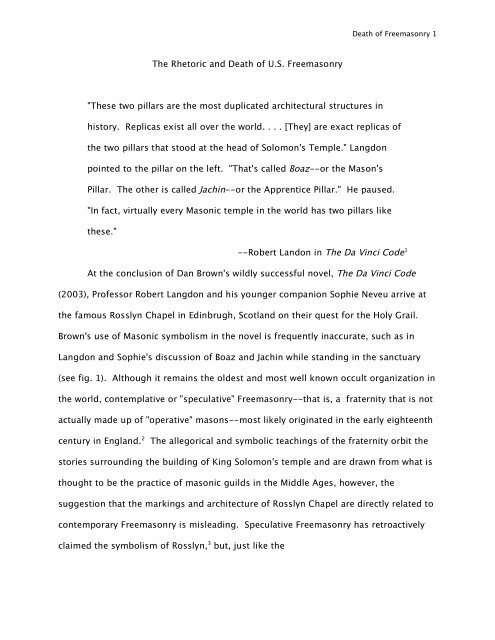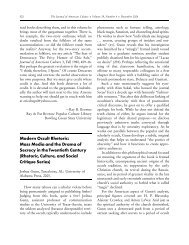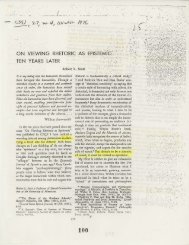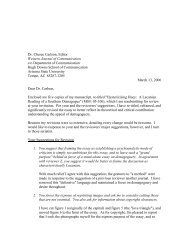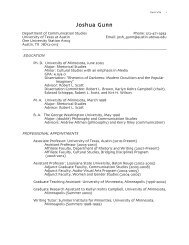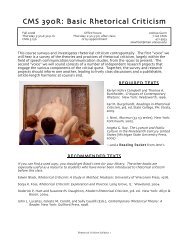The Rhetoric and Death of U.S. Freemasonry In this essay I argue ...
The Rhetoric and Death of U.S. Freemasonry In this essay I argue ...
The Rhetoric and Death of U.S. Freemasonry In this essay I argue ...
You also want an ePaper? Increase the reach of your titles
YUMPU automatically turns print PDFs into web optimized ePapers that Google loves.
<strong>Death</strong> <strong>of</strong> <strong>Freemasonry</strong> 1<br />
<strong>The</strong> <strong>Rhetoric</strong> <strong>and</strong> <strong>Death</strong> <strong>of</strong> U.S. <strong>Freemasonry</strong><br />
"<strong>The</strong>se two pillars are the most duplicated architectural structures in<br />
history. Replicas exist all over the world. . . . [<strong>The</strong>y] are exact replicas <strong>of</strong><br />
the two pillars that stood at the head <strong>of</strong> Solomon's Temple." Langdon<br />
pointed to the pillar on the left. "That's called Boaz--or the Mason's<br />
Pillar. <strong>The</strong> other is called Jachin--or the Apprentice Pillar." He paused.<br />
"<strong>In</strong> fact, virtually every Masonic temple in the world has two pillars like<br />
these."<br />
--Robert L<strong>and</strong>on in <strong>The</strong> Da Vinci Code 1<br />
At the conclusion <strong>of</strong> Dan Brown's wildly successful novel, <strong>The</strong> Da Vinci Code<br />
(2003), Pr<strong>of</strong>essor Robert Langdon <strong>and</strong> his younger companion Sophie Neveu arrive at<br />
the famous Rosslyn Chapel in Edinbrugh, Scotl<strong>and</strong> on their quest for the Holy Grail.<br />
Brown's use <strong>of</strong> Masonic symbolism in the novel is frequently inaccurate, such as in<br />
Langdon <strong>and</strong> Sophie's discussion <strong>of</strong> Boaz <strong>and</strong> Jachin while st<strong>and</strong>ing in the sanctuary<br />
(see fig. 1). Although it remains the oldest <strong>and</strong> most well known occult organization in<br />
the world, contemplative or "speculative" <strong>Freemasonry</strong>--that is, a fraternity that is not<br />
actually made up <strong>of</strong> "operative" masons--most likely originated in the early eighteenth<br />
century in Engl<strong>and</strong>. 2<br />
<strong>The</strong> allegorical <strong>and</strong> symbolic teachings <strong>of</strong> the fraternity orbit the<br />
stories surrounding the building <strong>of</strong> King Solomon's temple <strong>and</strong> are drawn from what is<br />
thought to be the practice <strong>of</strong> masonic guilds in the Middle Ages, however, the<br />
suggestion that the markings <strong>and</strong> architecture <strong>of</strong> Rosslyn Chapel are directly related to<br />
contemporary <strong>Freemasonry</strong> is misleading. Speculative <strong>Freemasonry</strong> has retroactively<br />
claimed the symbolism <strong>of</strong> Rosslyn, 3 but, just like the


